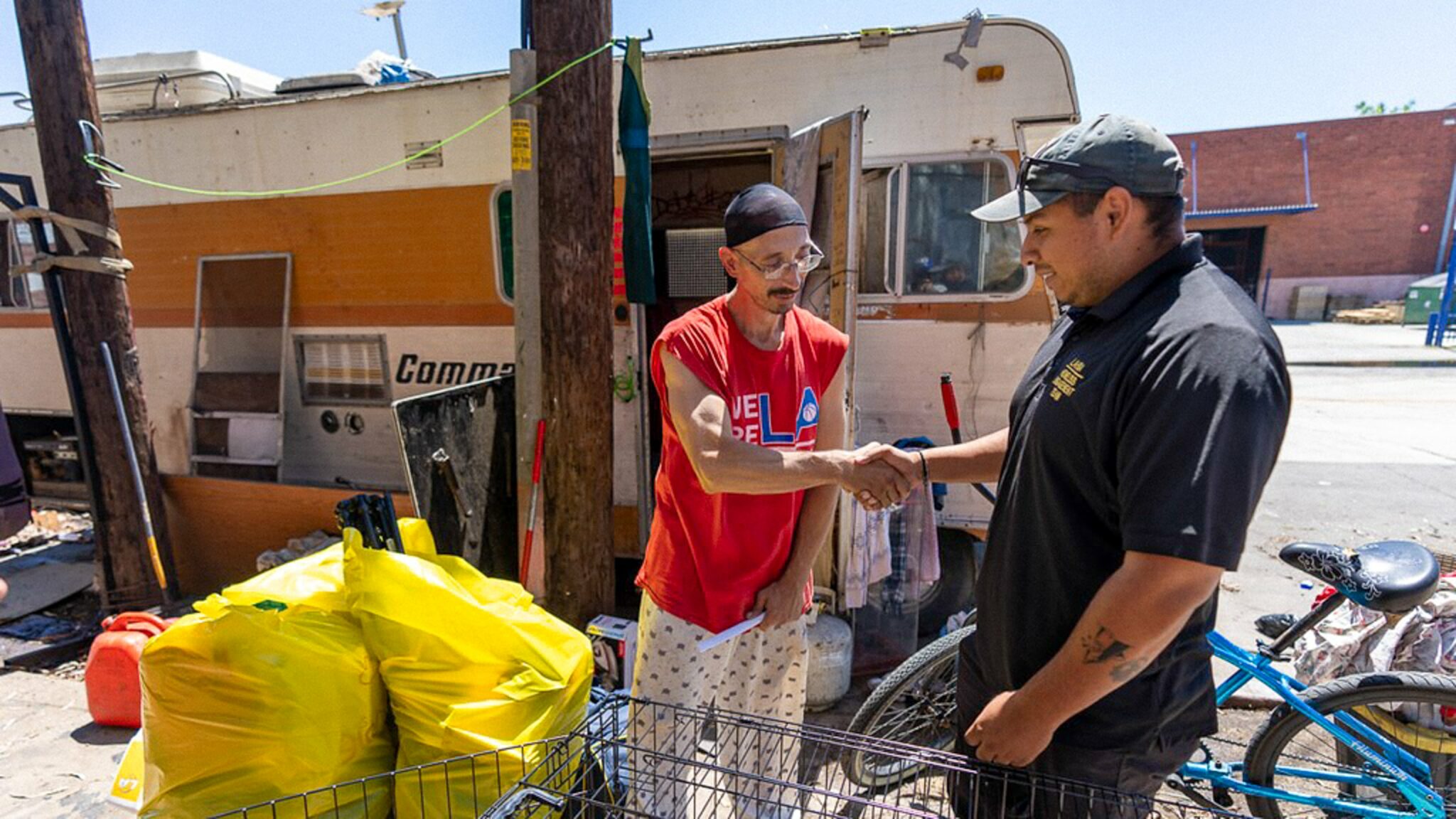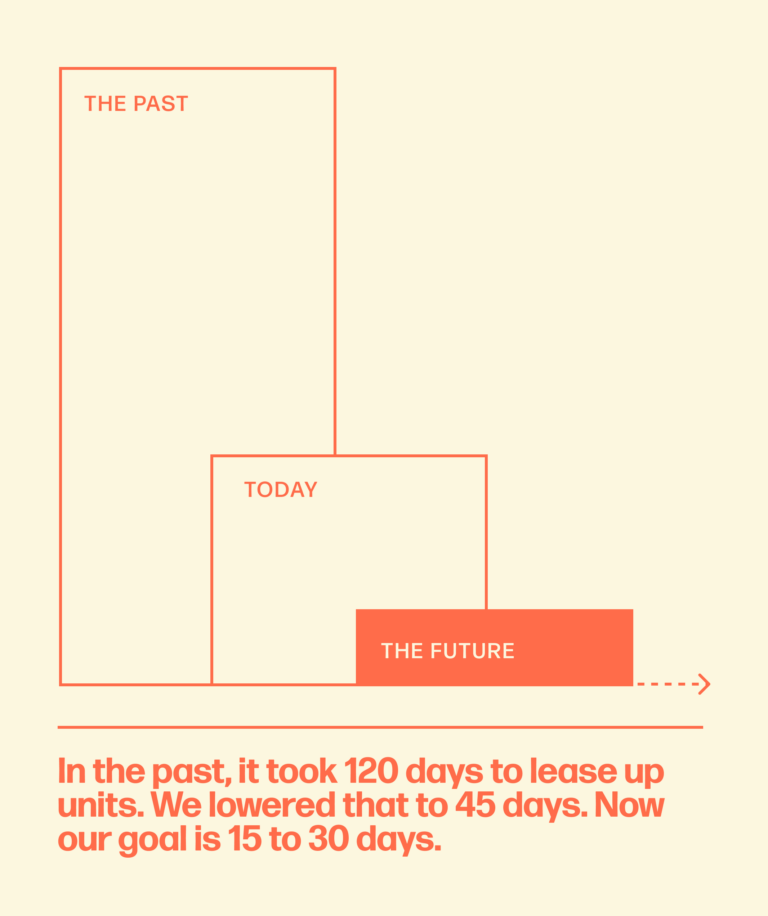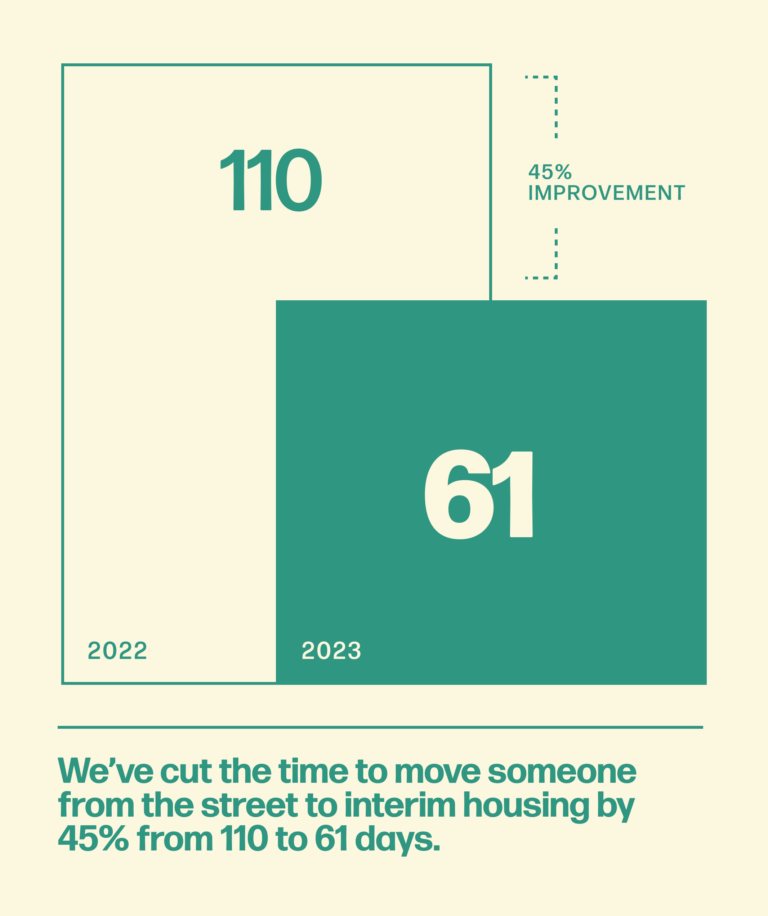
Rehousing L.A. Together

New, smart, dedicated leaders across LA County are improving how we deliver services to get people off the streets and on a path to home faster.
Every year, we find more than 20,000 homes for people experiencing homelessness. It’s not enough. That’s why a new generation at LAHSA, the City and the County are thinking bigger, cutting red tape, and building the connections it takes to maximize our resources.
Thinking Bigger
LAHSA is partnering with property owners across LA to remove barriers to permanent housing on a much bigger scale.

More homes, as fast as we can lease them
In the past, it has required a lot of paperwork, property hunting, and negotiating to permanently house people. We don’t have that kind of time. For every success story, there are thousands more people ready to say yes while waiting for a home that they can afford.
We’re piloting master leasing, a best practice from other regions where LAHSA leases a whole apartment building. It’s another way we can scale up and get people into housing faster.
Master leasing streamlines the whole system so LAHSA can focus on the thing that matters: finding homes for people who need them.
“In one word, Master Leasing is a game-changer.”
Cutting Red Tape
LAHSA’s new crisis response team is one way we’re addressing unsheltered homelessness faster.

Sometimes it just takes a little problem-solving
LA is a massive place with lots of overlapping people, programs, and policies that can sometimes get in the way of everyone’s shared goals. That’s where a fixer like Viron comes in.
LAHSA’s new Multi-Department Crisis Response Team is cutting the red tape between the City and County to get Angelenos the help they need. They’re not pencil pushers. They’re a new generation of problem solvers.
“You have to get a lot of the little things right to solve big problems. Every detail matters.”
Making Connections
The work on the ground is hard, and there are no shortcuts. It’s about relationships, building trust, and making connections one-on-one.

We cannot reduce homelessness without trust and understanding
Thanks to funding authorized a few years ago by LA County residents, there are now hundreds of housing navigators like Ghaalib Green all across LA County who rely on their hustle, heart, and more than a little charisma to move folks off the streets and into housing.
They have to build a bridge between landlords and their prospective tenants, who often have experienced deep trauma. It’s not easy to earn the trust of someone who has been let down so often before, which is one reason it takes time.
“Following through is something that a lot of partners haven’t experienced…I want to be that person to follow through for them.”
Frequently asked questions
Tell me more.
An estimated 75,518 people experience homelessness on any given night in Los Angeles County, including 20,363 people in shelter. That number is based on the most recent point-in-time count conducted by LAHSA and hundreds of volunteers in January 2023.
LAHSA is a regional agency that helps coordinate housing and services for families and individuals in Los Angeles County. Through LAHSA, funding and program support are provided to over 100 nonprofit partners assisting people experiencing homelessness through outreach, access centers, emergency shelters, safe havens, transitional and permanent housing, and prevention programs.
Across LA County, we are changing how we address homelessness. New leaders are improving how we deliver services, and they’re getting on the same page to address root causes–especially the affordable housing shortage. Here are some of the changes we’re making:
More beds. We’ve increased our pre-pandemic shelter capacity by 60%–from 15,617 beds in 2019 to 26,245 beds in 2023.
Declaring an emergency. New leadership at the city and county have taken bold steps to declare homelessness an emergency, which has cut red tape for several programs that address homelessness and implemented programs like Inside Safe and Pathway Home that bring our unsheltered neighbors inside.
Moving faster. We’ve cut the time to move someone from the street to interim housing by 45% from 110 to 61 days.
More effective. We’ve seen a nearly 30% increase in interim housing placements from street outreach.
Long-term progress. Over the past 5 years, we’ve averaged over 20,000 housing placements each year, with 22,540 in 2022.
More homes. The county is on track to create 5,000 new housing units, and 3,200 homes will open this year thanks to Prop HHH. In addition, LAHSA is the first government agency to implement master leasing – or leasing whole apartment buildings – to house people experiencing homelessness.
When it comes to permanent supportive housing, the kind that includes services such as mental health care and has proven to be 90% effective at ending chronic homelessness, we are building more. We expect 3,200 permanent supportive homes to open this year alone.
Unfortunately, most people in LA County are burdened with high housing costs, and there are major structural barriers to creating more homes people can afford.
A new countywide agency called the LA County Affordable Housing Solutions Agency could change that. It was created to help renters avoid falling into homelessness and to make housing more affordable in LA County.
In addition, voters in the city of LA recently approved Measure ULA, which will provide increased funding for affordable housing acquisition, preservation, and construction.
It’s difficult to see the difference we’re making because as fast as we’re housing people (22,540 placements in 2022), even more are losing their homes. Families are struggling. Our wages just don’t match our cost of living as prices are going up.
For every success story, there are thousands more people ready to say yes and waiting for a home that they can afford.
For people who experience chronic homelessness, which is to say they have been without a home for a long time or they frequently fall back into homelessness, a lack of care is a major factor. That includes physical health care, mental health care, trauma counseling, and substance use treatment.
For this reason, L.A. County’s mental health system is shifting strategies to prioritize services, shelter, and housing for those with behavioral health challenges who have been homeless for more than six months and step up coordination and resources among L.A.’s mental health and health services departments.